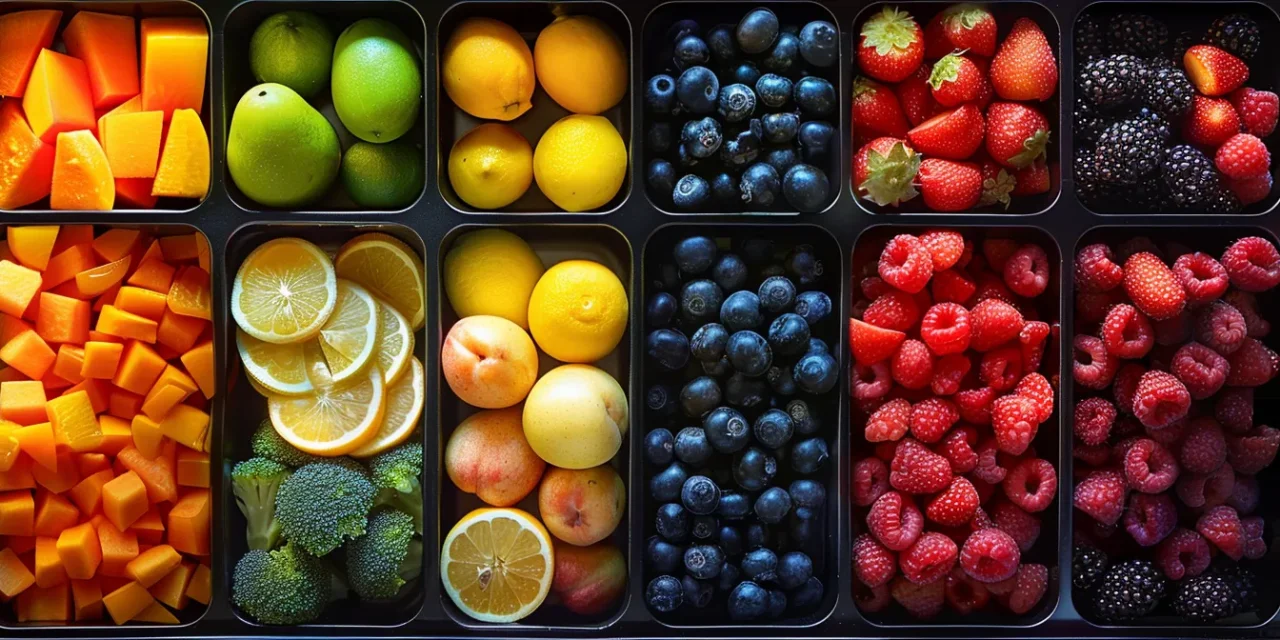Table of Contents
ToggleHealthy and Delicious Toddler Lunch Ideas for Busy Parents
Do parents ever wonder how to craft a lunch for their toddler that is as nutritious as it is appealing? This post delves into the realm of toddler nutrition basics and offers efficient meal prep strategies that save time without sacrificing quality. Readers will discover a variety of easy and healthy alternatives to the common sandwich, integrating ingredients like cheese, protein-rich beans, whole grains, and rice to satisfy both the dietary needs and the taste buds of little ones. Focusing on overcoming the challenges of balancing a budget with nutritional value, and addressing the concerns of picky eaters, the content promises to equip busy parents with the tools and knowledge to prepare quick, wholesome meals. By engaging with these inventive and practical lunch ideas, readers are empowered to streamline their lunch-making process while ensuring their toddlers are well-nourished and content.
Understanding Toddler Nutrition Basics

For toddlers, proper nutrition is a cornerstone of vibrant health and robust development. It is crucial to consider essential nutrients that support growth, appropriate portion sizes, and a well-balanced distribution of food groups across meals. Parents seeking to create healthy and delicious lunches for their young ones must prioritize a variety of elements, including butter for fats, water for hydration, and a mix of colorful vegetables like carrots and peas for vitamins and fiber, not forgetting the protein-rich peas. In the upcoming sections, experts break down these concepts, offering insights into orchestrating meals that are as nutritious as they are appealing to a toddler’s palate.
Essential Nutrients for Growth and Development
For optimal growth and development, toddlers require a spectrum of essential nutrients. A strawberry-infused fruit salad can be a delightful way to include vitamin C and antioxidants, essential for immune health and tissue repair. Additionally, spreading peanut butter, a source of healthy fats and protein, on whole grain bread makes for a robust, heart-friendly lunch option. Parents can also incorporate a fresh tomato into the meal, which brings a suite of necessary vitamins such as A and K, as well as fiber – all instrumental for a child’s healthy development.
Portion Sizes Appropriate for Toddlers
When crafting a toddler’s lunchbox, it’s essential to tailor portion sizes to their small stomachs while ensuring the meal is nutrient-dense. For instance, a half-sized banana offers manageable bites and provides energy through natural sugars and potassium. A mini vegetable quesadilla, with just a quarter of a standard tortilla, is a perfectly-sized recipe for little hands and meets the needs for both protein and vegetables without overwhelming their appetite. Parents should aim to fill the lunchbox with small, varied portions that maintain a balance between satisfaction and a child’s nutritional requirements.
Balancing Food Groups in Each Meal
Ensuring each meal is well-rounded is paramount in a toddler’s diet. A balance of protein, grains, fruits, and vegetables can be creatively achieved, for example, through a hummus and vegetable bento box. This not only introduces a wholesome variety of nutrients but also engages a child’s interest with colorful and tactile food options. Whole-grain bread provides a solid source of fiber and energy, while a small, homemade muffin could offer a comforting, portion-controlled treat. Such meals deliver the necessary fuel for busy toddlers, fostering healthy growth and satisfying their taste buds simultaneously.
Feeding a toddler right sets a foundation strong as oak. Now, let the grocer’s list alone and focus on the clock – quick meal prep waits ahead.
Time-Saving Meal Prep Strategies for Parents

Time is a precious commodity for parents, and meal preparation for toddlers need not add to daily stress. Planning meals ahead of time can streamline the process, allowing for quick assembly on busy mornings. Techniques such as batch cooking and freezing, particularly useful for dishes like sauce-drenched pasta or yogurt-based snacks, can save valuable minutes. Moreover, tips for rapidly combining elements like snack-sized fruit preserves enrich the midday meal. These strategies offer parents the ability to efficiently prepare healthy lunches, ensuring toddlers enjoy a diverse and nutritious diet every day.
Planning Meals Ahead of Time
Planning meals ahead of time can be a lifesaver for parents balancing the nutritional needs of toddlers with the demands of a busy schedule. Whip up a large batch of homemade pancakes on the weekend, complete with mashed bananas or blueberries for an added health boost, then freeze individual portions for a quick breakfast or lunch option. Alternatively, parents can prepare a hearty pot of vegetable soup or macaroni and cheese, which incorporates pureed potato for creaminess and finely chopped cucumber for a refreshing crunch. These dishes can be refrigerated and easily reheated, providing convenient, nutritious meals that cater to a toddler’s diverse palate and developmental needs.
Batch Cooking and Freezing Techniques
Incorporating batch cooking and freezing techniques into weekly meal preparation can significantly streamline the process of ensuring nutritious lunches for toddlers. Parents might prepare a sizable batch of pesto pasta salad, replete with diced sweet potato and boiled egg, capturing a blend of protein, carbohydrates, and vitamins. By dividing the dish into toddler-sized portions and freezing them, caregivers can effortlessly provide a wholesome meal, rich in nutrition and flavor, on hectic days without the necessity for last-minute preparation.
Quick Assembly Tips for Busy Mornings
On those mornings when time seems to evade busy parents, having quick, nutritious lunch components ready to go can be a game-changer. Blending milk into a smoothie with banana and avocado provides a creamy, energy-boosting drink that can be consumed on the way to daycare. Additionally, preparing a soft-boiled egg the night before allows for a protein-rich addition to any toddler’s lunchbox, which, when paired with a dollop of cream cheese on a whole-grain cracker, offers a satisfying balance of flavor and nutrition. For parents concerned with allergies, substituting nuts with seeds ensures that their toddler still receives essential healthy fats without the risk, making quick assembly not just convenient, but also considerate of dietary needs.
The method sharpens, and time bends under your command with meal prep mastery. March forward; it’s now the turn for wholesome, swift sandwiches to rise in ranks as your allies in nourishment.
Easy and Healthy Sandwich Alternatives

Transitioning from the usual lunchbox offerings, this section delves into sandwich alternatives that are both nutritious and enjoyable for toddlers. It will cover nutritious fillings like turkey and cream cheese, the role of whole grain and gluten-free bread options for diverse dietary needs, and innovative ways to make sandwiches intriguing with fun shapes. These strategies, employing ingredients such as grape slices and bell pepper, transform a conventional meal into an engaging experience for young children. Parents gain practical solutions to refresh their toddler’s midday meal with simplicity and a touch of creativity.
Nutritious Fillings Kids Enjoy
Toddlers often show more enthusiasm for their meals when they’re presented with a medley of colors and flavors. For a nutritious twist on the classic sandwich, parents can combine a spread of cream cheese with blueberry puree on a whole wheat tortilla, offering a delightful mix of healthy fats and antioxidants. Transforming yesterday’s steamed broccoli and chicken dinner into today’s tortilla roll-up not only addresses the utilization of leftovers but ensures the intake of essential protein and fiber, crucial for a child’s growth and well-being.
Whole Grain and Gluten-Free Bread Options
Whole grain and gluten-free bread options serve as excellent bases for toddler-friendly sandwiches, accommodating various dietary requirements and preferences. For instance, slice a piece of soft, chickpea flour bread and pair it with a light spread of apple sauce and thin pieces of cherry tomato, creating a nutrient-dense toast that introduces a harmonious blend of sweet and savory flavors. This ingredient combination not only satisfies a growing child’s taste buds but also supplies them with a robust mix of vitamins, fiber, and protein, essential for their daily activities and growth.
Making Sandwiches Fun With Shapes
Creative parents have discovered that turning sandwiches into fun shapes can significantly heighten a toddler’s interest in healthy eating. By using cookie cutters to fashion whole-grain or gluten-free bread into stars or hearts, and filling them with nutrient-rich spinach or sunflower butter, caregivers can infuse meals with both whimsy and nourishment. Moreover, alternative ingredients like seed sprinkles, olive slices, or noodle smiles can turn a simple lunch into an exciting interactive experience, encouraging little ones to enjoy their nutritious food with delight.
With sandwiches now reinvented, it’s time to turn our attention to the fresh wonders of garden fare. Let’s uncover the art of infusing meals with vibrant vegetables and fruits that not only nourish but delight.
Creative Ideas for Vegetables and Fruits

Encouraging toddlers to eat healthily often requires creativity, especially when integrating vegetables into their favorite dishes, presenting fruits in fun ways, and crafting smoothies full of nutrients. This section provides busy parents with strategies to weave nutritious foods into the preschool menu. From transforming classic ‘hot dog’ meals with a vegetable twist, to using ‘flour’ for more than just pretzels, and enticing little ones with fruit-slice art and dipping sauces cheeky enough to conceal a boost of vitamins. Each topic offers practical insights into making mealtime both joyful and healthful for toddlers.
Incorporating Veggies Into Favorite Dishes
Integrating vegetables into a toddler’s diet can be as simple as incorporating them into finger food favorites. Busy parents can enhance the nutritional value of a meal with subtle cooking hacks, like baking carrot shreds into a homemade sausage roll or adding finely chopped spinach to an oven-baked frittata. These approaches not only sneak in the goodness of vegetables but also cater to a toddler’s preference for easy-to-eat items, demonstrating that wholesome eating can align with a child’s love for playful, tactile meals.
Fun Fruit Presentations to Encourage Eating
To entice toddlers to consume more nutritious options, parents can present fruits in imaginative ways that capture a child’s interest. For example, transforming slices of pear into fun shapes resembling french fries encourages playful exploration and eats, with the added health benefits of fiber and vitamins. Pairing these with a small container of ranch dressing for dipping can make the experience reminiscent of enjoying a favorite meat and potatoes meal, only with much more nutritional value and no fried components. This simple, yet creative strategy makes fruit consumption enticing and enjoyable, while catering to both the taste preferences and nutritional needs of young children.
Smoothies Packed With Nutrients
For toddlers, a smoothie can be a nourishing addition to lunch, where parents can blend a symphony of nutrients into a single, tasty bowl. A concoction of spinach, ripe bananas, and nut butter, with hints of cherry, offers a smoothie that rivals any peanut butter and jelly sandwich in both satisfaction and health benefits. This blend, served in a brightly colored bowl, tempts even the most vegetable-averse toddler, with the bell-like sweetness of fruit balancing the rich flavors, creating a lunchtime staple that’s as nutritious as it is delightful.
Harvesting the bounty of carefully chosen fruits and vegetables, we turn to the art of simplicity. Let’s continue, bearing witness to the elegance of one-dish lunches that are as straightforward as they are satisfying.
Simple One-Dish Lunch Recipes

Within the bustling life of parenting, the allure of simple yet nutritive toddler meals is undeniable. In this section, LifeSyner.com provides practical one-dish lunch recipes, catering to both the taste buds of young children and the time constraints of caregivers. Upcoming topics like Quick Pasta and Grain Bowls infuse staples like granola and butternut squash into child-friendly creations. The section on Toddler-Friendly Soups and Stews introduces hearty combinations of vegetables and cheddar cheese. For resourceful parents, Using Leftovers in New Ways offers smart techniques to repurpose meals with just a tablespoon of innovation. These offerings not only streamline lunch preparation but also ensure toddlers receive the varied nutrients essential for their growth.
Quick Pasta and Grain Bowls
For parents seeking a nourishing yet swift option for their toddler’s lunch, quick pasta and grain bowls offer a perfect solution. A delectable fusion of diced ham, shredded mozzarella, and tender oat spirals can be easily tossed together for a balanced meal rich in protein and fiber. To finish, a colorful garnish of watermelon cubes infuses a sweet, hydrating element, complementing the savory notes of the bowl while catering to the nutritional needs of growing children.
Toddler-Friendly Soups and Stews
For parents grappling with the dual demands of nutrition and convenience, toddler-friendly soups and stews are a godsend. A medley of diced vegetables, lean meats or legumes, and a gentle heat can simmer together in a single pot, providing a nutritious meal rich in flavor that appeals to a child’s developing palate. Enhancing the experience and nutrition, a spoonful of creamy sunflower seed butter can add a nutty richness and a generous helping of healthy fats, while a small piece of soft cake on the side could serve as a well-portioned treat to round off the lunch bag.
Using Leftovers in New Ways
Resourceful parents often find themselves with an assortment of leftovers, which offer a foundation for creating nutritious and palatable toddler meals. For instance, a surplus of whole grain rice can become the base for a new dish when combined with protein-rich edamame, a sprinkling of cheese, and repurposed meatballs, cut into toddler-friendly sizes. Another evening’s leftover macaroni can be tossed with bits of chicken and cherry tomatoes, creating a fresh take on a pasta salad. A fun and fiber-filled twist might even see the previous morning’s unsweetened cereal transformed into a crunchy topping for a savory yogurt-based snack, ensuring that no nutritious grain is left behind, while keeping the meals diverse and appealing for young ones.
As we savor the simplicity of one-dish meals, our thoughts turn to those with dietary restrictions. Let us now consider how to extend this culinary kindness, ensuring that our next offerings are safe and delectable for all guests at the table.
Allergy-Friendly Lunch Options

Addressing the challenge of allergies in toddler nutrition requires dedication and knowledge, especially in meal preparation. LifeSyner.com recognizes the importance of dairy-free and nut-free recipes, providing busy parents with practical options that exclude common allergens like eggs, soy, and wheat. This section will guide caregivers through crafting safe lunches using substitutions such as quinoa and salmon, and will emphasize the significance of diligently reading ingredient labels. Such vigilance ensures that alternatives like an allergy-friendly english muffin are both safe and enjoyable for children to consume. Armed with these strategies, parents can confidently prepare delectable and nutritious lunches that cater to the health requirements of their young ones.
Dairy-Free and Nut-Free Recipes
Creating nourishing, allergy-friendly lunches for toddlers is both a necessity and a craft for parents monitoring dairy and nut sensitivities. A brown rice and pumpkin stir-fry offers a comforting, nutrient-rich alternative to the conventional cheese sandwich, providing essential vitamins and minerals without common allergens. To cater to a child’s preference for hands-on dining, a dairy-free ‘cream cheese’ spread made from blended sesame seeds can be spread on a soft flour tortilla, ensuring a safe yet flavorful lunch option that’s free from nuts and lactose, effectively addressing common dietary restrictions with ease and creativity.
Substitutions for Common Allergens
When catering to young palates with dietary restrictions, parents must adeptly navigate common allergens, providing safe yet savory options like a homemade ketchup devoid of dairy and soy—a hearty accompaniment to oven-baked green bean fries. Additionally, a morning routine can still delight with a “dairy-free french toast” using a toaster for convenience; here, a combination of banana puree and almond milk can create a rich, custardy soak for the bread, substituting traditional egg mixtures. Lastly, for a crunchy snack, parents can turn to baked celery sticks, seasoned and satisfying, eliminating the need for nuts while still packing a nutritional punch.
Reading Ingredient Labels Carefully
For parents meticulously managing allergies, diligent scrutiny of ingredient labels is imperative, particularly when introducing new items like salsa or marinara sauce into their toddler’s lunch. Even seemingly innocuous products can contain traces of nuts or dairy, making it essential to evaluate labels for any mentions of almond, milk, or other allergy-triggering substances before deeming them safe for consumption. Offering almond-free, zucchini-rich options ensures a nutritious addition minus the allergen worries, while crafting homemade french toast allows full control over ingredients, sidestepping hidden additives and ensuring a safe and satisfying meal.
Navigating the realm of allergy-friendly food opens avenues for creativity in the kitchen. Let’s bring small hands into the mix, turning lunch preparation with toddlers into a joyful dance of learning and bonding.
Involving Toddlers in Lunch Preparation

Incorporating toddlers in lunch preparation can offer an array of benefits, and LifeSyner.com is keen to discuss how simple tasks tailored for little helpers can foster independence. Engaging children in the kitchen not only cultivates cooking skills but also plays a crucial role in building healthy eating habits from an early age. Future sections delve into easy ways for toddlers to assist with meals, using ingredients like pineapple and frozen peas, to preparing a picnic with lettuce wraps or a cottage cheese snack. By highlighting the positive impacts of such involvement, parents gain insights into making meal prep an enriching experience that extends beyond the dining table.
Simple Tasks for Little Helpers
Engaging toddlers in preparing their packed lunch can be a delightful bonding activity that also introduces them to fundamental cooking concepts. For example, parents can guide their young ones to use a cookie cutter to shape a chicken nugget or whole-grain sandwich, turning a standard meal into something whimsical and fun. Likewise, toddlers can sprinkle a pinch of salt in a homemade noodle soup under supervision, promoting an appreciation for flavors and the joy of creating their own nutritious lunches.
Benefits of Cooking Together
Involving toddlers in the kitchen, particularly during the preparation of meals such as pigs in a blanket or a nutritious chicken salad, offers invaluable learning experiences. The act of assembling these lunches can enhance a child’s fine motor skills and introduce them to basic food groups like beef or vegetables found in tomato soup. Moreover, it provides a practical setting for parents to educate their children about healthy eating, emphasizing the importance of consuming less sugar for a balanced diet. Through such involvement, toddlers also gain an early sense of self-sufficiency and are more likely to appreciate the meals they helped create.
Building Healthy Eating Habits Early
Inculcating healthy eating habits early in life sets the stage for a lifetime of beneficial dietary choices. By involving toddlers in the process of preparing their own lunches, parents can replace the temptation of sugary juice with the hands-on fun of squeezing fresh oranges or mixing their own fruit-infused water. Opting for homemade popcorn over packaged snacks allows little ones to witness and participate in the process of creating healthier snack options, steering clear of high-sodium and preservative-laden alternatives. When parents opt for dough-making sessions over ready-to-eat products, toddlers develop an understanding of what goes into their food—a foundational step towards preferring a slice of hearty, homemade bread alongside nutritious baked beans rather than reaching for processed bacon strips. This engagement at an early age fosters not just a skill but a discerning approach to food selection and an affinity for wholesome meals crafted with care.
Engaging a toddler in the kitchen paves the way for adventurous eating. Let’s now turn to meals that will entice even the most discerning of young palates.
Lunch Ideas for Picky Eaters

Addressing the dietary preferences of picky eaters requires a multifaceted approach. The upcoming discussions focus on strategies to gently introduce new foods, such as a sprinkling of parmesan on tofu, or the subtle addition of onion for depth. Techniques to make meals visually appealing with colorful honey-glazed carrots, rich in vitamins, can significantly pique a toddler’s interest. Interactive elements like build-your-own rice cakes not only entertain but also offer nutritious engagement. These strategies promise busy parents inventive ways to cultivate their child’s palate and nourish them with wholesome choices.
Introducing New Foods Gradually
When dealing with the selective preferences of young eaters, the gradual introduction of new flavors and textures is key. A tried-and-true method involves adding a novel ingredient to a familiar favorite, such as thinly slicing green zucchini into a classic grilled cheese—a simple technique recommended in many a children’s cookbook. Parents can further ease this transition by using minimal oil for a healthier version and opting for the microwave to melt the cheese uniformly, leading to a warm, inviting meal that invites curiosity without overwhelming the child’s palate.
Making Meals Visually Appealing
To entice picky eaters, presenting toddler food in an aesthetically pleasing manner is as crucial as the meal’s nutritional content. Crafting a colorful array of bites from different fruits and vegetables, such as vibrant strawberry slices alongside a spectrum of other cut fruits, encourages toddlers to taste while they feast with their eyes. This simple strategy transforms ordinary meals into an inviting display that can make healthy eating exciting for toddlers, easing the stress that parents often face when introducing new foods.
Interactive Foods They Can Assemble
Engaging picky eaters in the lunch-making process can be both fun and educational when parents introduce interactive food options that the children can assemble themselves. For instance, offering a serving of gluten-free taco shells alongside separate bowls of refried beans, ground beef, and a medley of fresh toppings allows toddlers to create their version of a taco, which not only makes mealtime exciting but also imparts a sense of control over their food choices. This hands-on approach not only caters to the diverse tastes of young eaters but also encourages them to try new combinations in a playful, stress-free environment.
Crafting meals for discerning young palates challenges even the most creative. Let us now turn to strategies that respect your wallet without sacrificing the appeal of the midday meal.
Budget-Conscious Lunch Planning

For parents on a budget, maintaining a nutritious diet for toddlers doesn’t require luxurious spending. Smart choices such as using affordable ingredients serve as the building blocks for nourishing meals, including alternatives to costly proteins like finger foods and fried rice enhanced with nutrient-dense orange slices or savory cinnamon accents. Smart shopping practices can help minimize waste, while home-grown herbs and vegetables add freshness and reduce costs, with no need for chocolate indulgences to keep lunchtime both healthy and delightful.
Affordable Ingredients That Are Nutritious
In the interest of crafting both cost-effective and nutritious meals for toddlers, parents can turn to affordable staples such as dried fruit, tuna, and cauliflower. For example, a small teaspoon of chopped, dried fruit can add a sweet, fibrous punch to oatmeal or yogurt, rendering it both healthful and appealing to a toddler’s taste buds. Similarly, flaked tuna emerges as an economical protein source that can be easily mixed with whole grain pasta and steamed cauliflower, offering a satisfying lunch that supports a child’s growth and energy needs without straining the family budget.
Minimizing Waste With Smart Shopping
Smart shopping involves purchasing the appropriate quantities and varieties of ingredients to reduce food waste and ensure that vibrant and nutrient-dense meals make it to the toddler’s lunchbox. Parents can effectively minimize waste by planning meals around overlapping ingredients, thus utilizing the entirety of each item purchased, such as using leftover roasted vegetables from dinner in a wholesome pasta salad for the next day’s lunch. This practical approach to grocery shopping not only promotes sustainable habits but also allows for the preparation of healthy meals for toddlers without the drawback of discarded, unused produce.
Growing Simple Herbs and Veggies at Home
For parents seeking to enrich their toddler’s diet while keeping costs down, growing simple herbs and vegetables becomes a practical and rewarding endeavor. Cultivating a home garden with staples like basil, parsley, cherry tomatoes, and lettuce enables families to freshly harvest ingredients, enhancing meals with added flavor and nutrition straight from the soil. This approach not only imparts a fresher taste to homemade toddler lunches but also instills valuable lessons on self-sufficiency and sustainability, providing children with wholesome food and an understanding of where their meals originate.
Planning meals within a budget requires not just ingenuity, but the right gear as well. Let’s turn to the tools and containers that make packing those frugal feasts a breeze.
Essential Tools and Containers for Packing Lunches

Packing a nutritious lunch for toddlers is an important task for parents. The selection of safe and functional lunchboxes, methods for keeping foods at the right temperature, and choosing convenient utensils are crucial for ensuring meals remain fresh and appealing. This section examines these key elements, providing options that are perfect for little hands and maintain meal integrity from kitchen to classroom.
Choosing Safe and Functional Lunchboxes
Selecting the right lunchbox is paramount for parents intent on providing their toddlers with healthy meals on the go. It is essential to choose lunch containers that are not only durable and easy to clean but also made from materials that are safe and free from harmful chemicals like BPA. A functional lunchbox features compartments that keep different foods separate and fresh until mealtime, further appealing to a toddler’s distinct taste preferences and aiding in portion control. Equipped with such a lunchbox, parents can rest assured knowing their child’s nutritious meal remains intact and appetizing.
Keeping Foods at the Right Temperature
Maintaining the correct temperature for a toddler’s lunch is not just about preserving taste; it’s also about safety, preventing the growth of bacteria on perishable items. Parents are encouraged to consider insulated lunch bags coupled with ice packs for cold foods, while stainless steel thermoses can keep soups and pastas warm until it’s time to eat. These simple tools allow busy caregivers to pack a variety of nutritious meals, secure in the knowledge that the food will remain fresh and safe until their little one is ready to enjoy it.
Convenient Utensils for Toddlers
When packing a toddler’s lunch, parents should select utensils that are ergonomically designed for small hands, fostering their growing independence. Utensils with easy-to-grip handles and soft, rounded edges ensure safety and ease of use, encouraging toddlers to self-feed during meals. This thoughtful choice not only aids in the development of fine motor skills but also makes the lunchtime experience more enjoyable for young children, supporting their journey to become proficient eaters.
Frequently Asked Questions
What are the nutritional requirements for toddlers?
Toddlers’ nutritional needs encompass a balanced mix of proteins, carbohydrates, fats, vitamins, and minerals, crucial for their rapid growth and cognitive development.
How can I streamline meal preparation for my toddler?
To streamline meal preparation for toddlers, plan weekly menus, pre-cut ingredients, and use time-saving appliances like blenders for quick, nutritious options.
What are some sandwich-free lunch options for toddlers?
For toddlers, consider these sandwich-free lunch options:
- Yogurt with fruit
- Rice and beans
- Vegetable sticks with hummus
- Cheese cubes with whole grain crackers
- Mini frittatas.
These meals are nutritious, easy to eat, and perfect for little hands.
How do I introduce more fruits and vegetables into my toddler's diet?
To introduce more fruits and vegetables into your toddler’s diet, consider making smoothies, offering colorful veggie snacks, and incorporating pureed vegetables into familiar dishes for enhanced nutrition and palatability.
What kitchen tools are essential for packing toddler lunches?
Essential kitchen tools for packing toddler lunches include a durable, child-friendly lunchbox, small containers for portion control, and silicone cupcake liners for separating foods.










